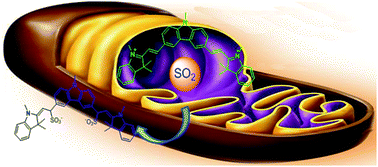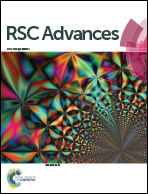A novel carbazole-based mitochondria-targeted ratiometric fluorescent probe for bisulfite in living cells†
Abstract
A novel mitochondria-targeted ratiometric fluorescent probe was developed via condensation of carbazole with two indolium units, which could realize the detection of bisulfite in a PBS buffer solution. The probe exhibited good mitochondrial location ability and could selectively respond to bisulfite among other sulfur-containing species in living cells.


 Please wait while we load your content...
Please wait while we load your content...